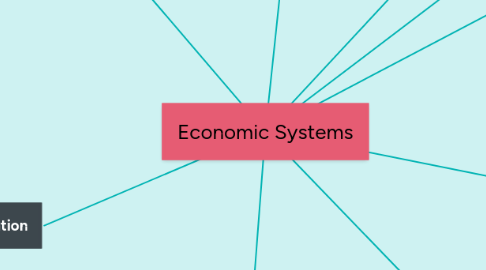
1. Private VS Public
1.1. 1
1.1.1. Private
1.1.1.1. IS
1.1.1.1.1. In economics, the part of the economy owned and controlled by businesses and individuals.
1.2. 2
1.2.1. Public
1.2.1.1. IS
1.2.1.1.1. In economics, the part of the economy owned and controlled by government and paid for by taxes.
2. Crown Corporation
2.1. IS
2.1.1. A Crown corporation is a company owned by Canada’s government to provide products and services to Canadians. (Reasons : to provide essential services, to promote economic development, to support Canadian culture and identity,) These reasons are why the government would consider creating Crown corporation.
2.1.1.1. FACTORS INTO
2.1.1.1.1. Consumers
2.1.1.1.2. Producers
2.1.1.1.3. Supply
2.1.1.1.4. Demand
2.2. RELATES TO
2.2.1. Competition
2.2.1.1. IS
2.2.1.1.1. In economics, rivalry among producers to sell products to consumers.
2.3. RELATES TO
2.3.1. Monopoly
2.3.1.1. IS
2.3.1.1.1. In an economic system, the opposite of competition is monopoly. A monopoly happens when one producer controls all supply of a product or service. Governments sometimes create monopolies as a way to provide essential services that require expensive infrastructure, such as water lines or sewer lines. In some cases, governments intervene to prevent monopolies and restore competition among producers.
3. Trade
3.1. INVOLVES
3.1.1. Unemployment Rate
3.1.1.1. IS
3.1.1.1.1. The percentage of the workforce that does not have jobs.
3.2. INVOLVES
3.2.1. Labour Unions
3.2.1.1. IS
3.2.1.1.1. An organization of workers that acts to protect workers’ rights and interests.
3.3. INVOLVES
3.3.1. Strike
3.3.1.1. IS
3.3.1.1.1. A cessation of work by workers. Strikes pressure employers to respond to issues that concern workers.
3.4. INVOLVES
3.4.1. Collective Bargaining
3.4.1.1. IS
3.4.1.1.1. Negotiating as a group. Collective bargaining is the key right established by unions for workers.
4. Factors Of Production
4.1. ARE
4.1.1. The three basic factors of production interact to limit the supply of what people need and want. (what creates scarcity)
4.1.1.1. BASIC FACTORS ARE
4.1.1.1.1. Land
4.1.1.1.2. Labour
4.1.1.1.3. Capital
5. Economies
5.1. Planned Economy
5.1.1. INCLUDES
5.1.1.1. Government
5.2. Mixed Economy
5.2.1. INCLUDES
5.2.1.1. Both
5.3. Market Economy
5.3.1. INCLUDES
5.3.1.1. No government
5.4. Shift Left
5.4.1. IS
5.4.1.1. A shift on the economic continuum towards more government involvement in the economy. A shift left is usually described as taking a more liberal position.
5.5. Shift Right
5.5.1. IS
5.5.1.1. A shift on the economic continuum towards less government involvement in the economy. A shift right is usually describes as taking a more conservative position.
6. Economics
6.1. ARE
6.1.1. The study of the production, distribution, and consumption of goods and services.
7. Economic System
7.1. IS
7.1.1. The way a society organizes the production, distribution, and consumption of goods and services.
8. Economy
8.1. IS
8.1.1. The resources and processes involved in the production, distribution, and consumption of goods and services.
9. Scarcity
9.1. IS
9.1.1. In economics, the idea that land (materials), labour and capital (money) limit the supply of what people want and need.
9.1.1.1. Public Good
9.1.1.1.1. IS
9.1.1.2. Individualism
9.1.1.2.1. IS
